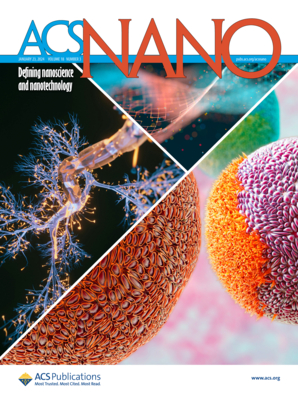Versatile Molecular Engineering of In Situ Cross-Linked Multifunctional Electrolytes for Long-Lifetime and Safe Semisolid Lithium Metal Batteries
IF 15.8
1区 材料科学
Q1 CHEMISTRY, MULTIDISCIPLINARY
引用次数: 0
Abstract
The practical application of semisolid lithium metal batteries is impeded by inadequate ionic conductivity, suboptimal oxidation/reduction stability, and safety concerns of the electrolyte. Herein, a versatile molecular engineering strategy is proposed to construct a robust polymer framework for semisolid electrolytes, which creates highly compatible cross-linked networks by the in situ gelation of concentrated succinonitrile-based plastic crystal electrolytes and multifunctional nitrogen- and fluorine-rich monomers. This strategy allows the electrolyte to promote rapid Li-ion transpsort through weak coordination with the polymer segments. Meanwhile, the strong interactions between the polymer matrix and succinonitrile enhance their mutual solubility, reduce the crystallinity of succinonitrile, and establish fast ion-conductive pathways. The resultant electrolyte induces the formation of LiF/Li3N-rich solid electrolyte interphases and achieves uniform lithium deposition behaviors. Moreover, it mitigates fire risks by cothermally decomposing to produce fire-extinguishing gases (CO2 and NH3) and leveraging the nonflammability of succinonitrile. Significant improvements in electrochemical performance have been observed in Li symmetric, Li||LiFePO4, and Li||LiNi0.8Co0.1Mn0.1O2 cells both at room temperature and high temperature (60 °C). As a demonstration model, this molecular engineering strategy has been successfully applied to enhance thermal stability and safety in Li||LiNi0.8Co0.1Mn0.1O2 pouch cells, offering a promising solution for semisolid lithium metal batteries under extreme conditions.

求助全文
约1分钟内获得全文
求助全文
来源期刊

ACS Nano
工程技术-材料科学:综合
CiteScore
26.00
自引率
4.10%
发文量
1627
审稿时长
1.7 months
期刊介绍:
ACS Nano, published monthly, serves as an international forum for comprehensive articles on nanoscience and nanotechnology research at the intersections of chemistry, biology, materials science, physics, and engineering. The journal fosters communication among scientists in these communities, facilitating collaboration, new research opportunities, and advancements through discoveries. ACS Nano covers synthesis, assembly, characterization, theory, and simulation of nanostructures, nanobiotechnology, nanofabrication, methods and tools for nanoscience and nanotechnology, and self- and directed-assembly. Alongside original research articles, it offers thorough reviews, perspectives on cutting-edge research, and discussions envisioning the future of nanoscience and nanotechnology.
 求助内容:
求助内容: 应助结果提醒方式:
应助结果提醒方式:


